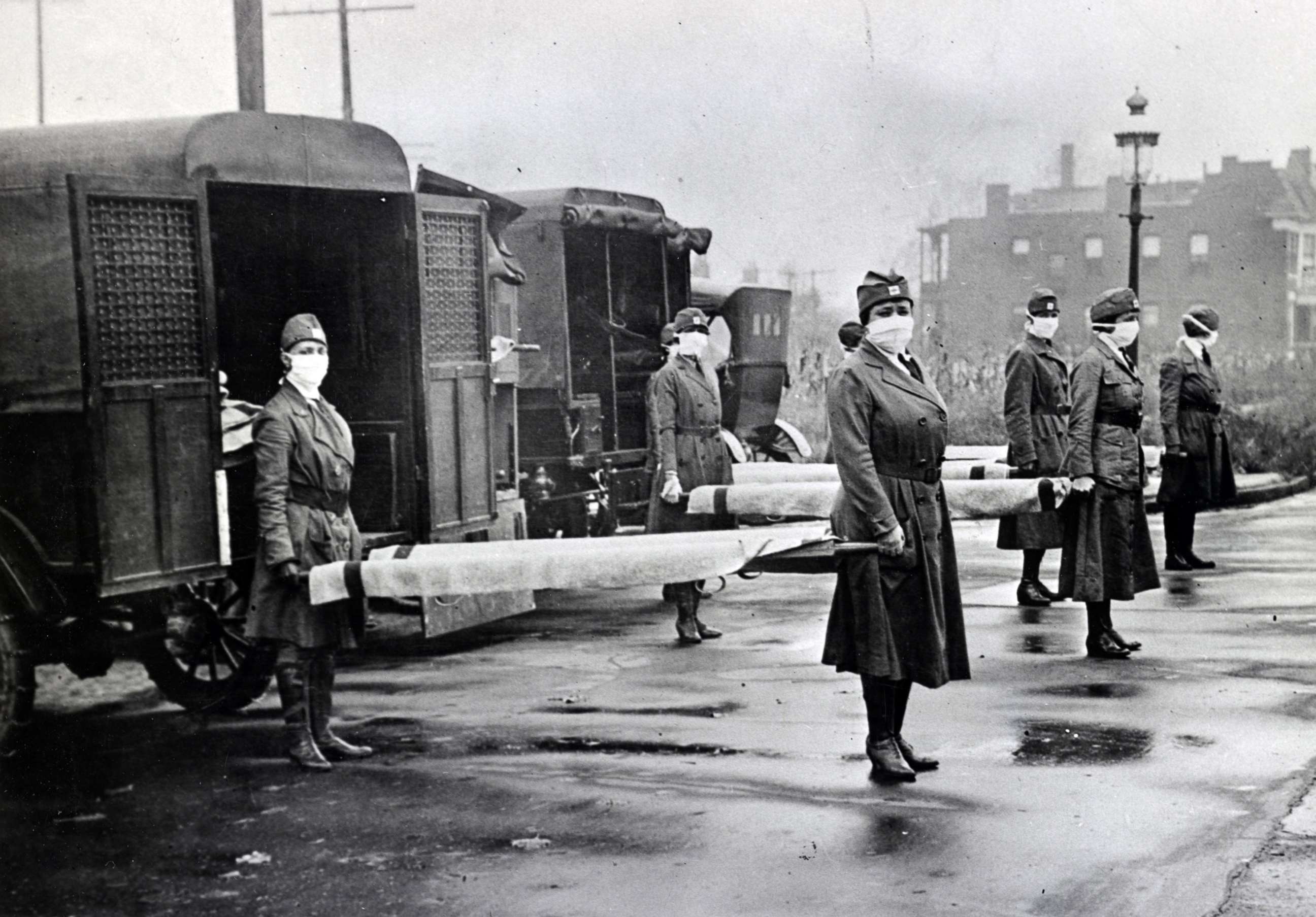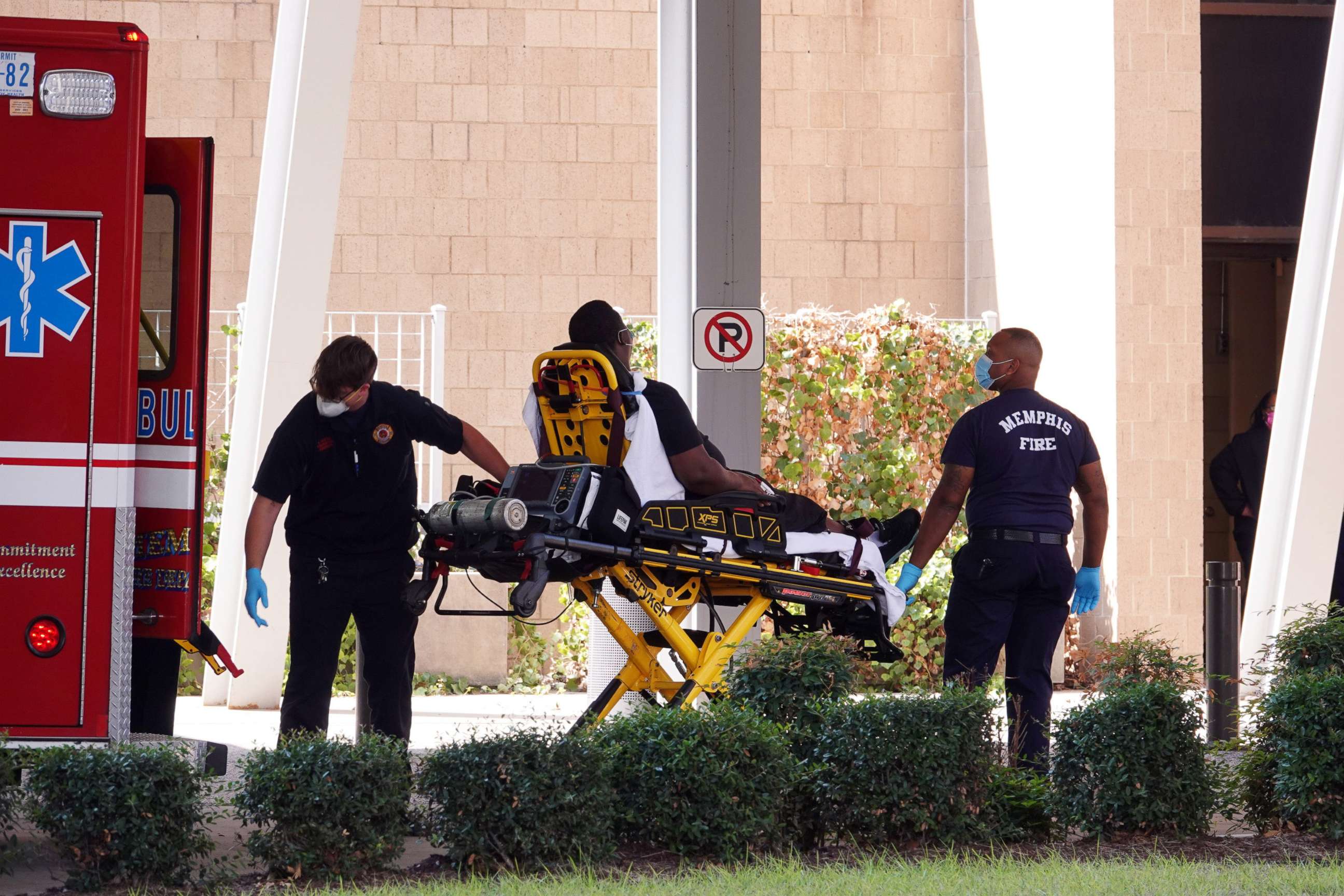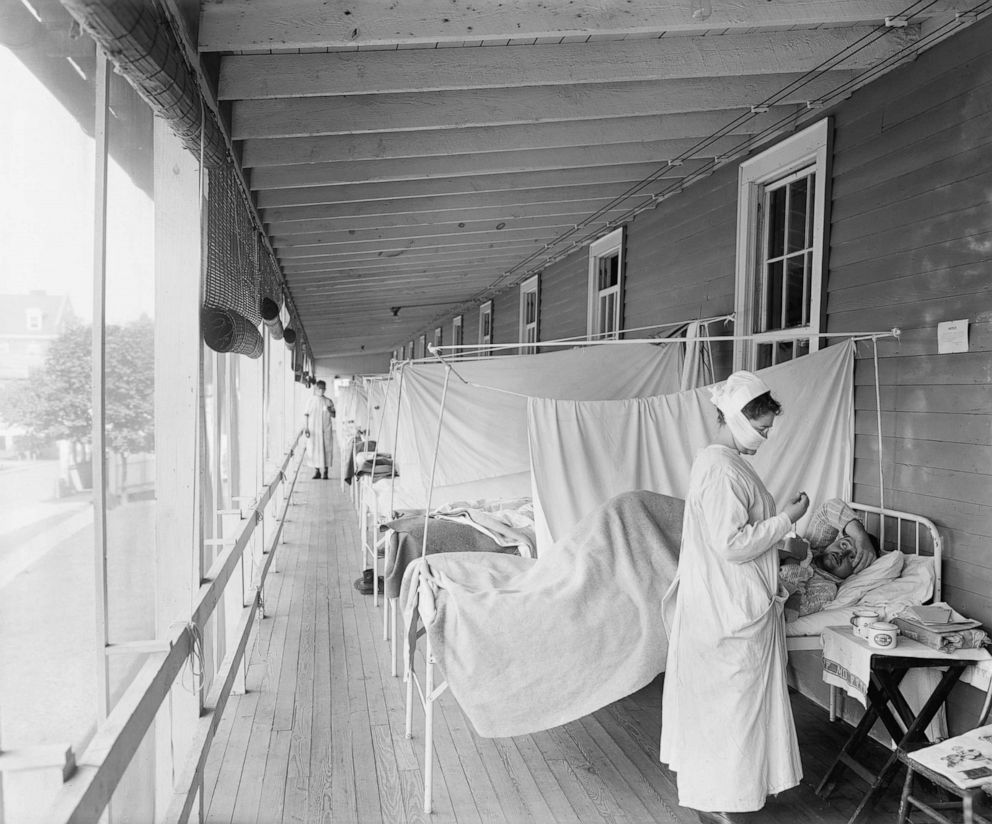Coronavirus death toll in US eclipses 1918 influenza pandemic estimates
More than 675,000 Americans have now died of COVID-19.
More than a century ago, the globe was left devastated by a pandemic that has been described by experts as "the deadliest in human history."
The 1918 influenza pandemic killed at least 50 million people worldwide, according to the Centers for Disease Control and Prevention, equivalent in proportion to 200 million in today's global population. An estimated 675,000 of those deaths occurred in the United States.
Now, 18 months into the coronavirus pandemic, the virus has claimed more American lives than its counterpart a hundred years ago.
At this point, at least 675,446 Americans have been confirmed to have died since the onset of the coronavirus pandemic, according to data collected by Johns Hopkins University, with thousands of Americans lives still being lost each day.
Surpassing the 1918 death toll is a dismal milestone, but experts suggest there are key differences between both pandemics that must be taken into account, given modern day access to better medical treatments and vaccinations.

"These are two different viruses, two different times in history, at two different times of medical history, with what you have available to combat or treat it," Howard Markel, professor of the history of medicine at the University of Michigan, told ABC News.
The influenza outbreak of 1918 began in the spring, with the novel H1N1 virus passing from birds to humans, and lasted for approximately two years. Approximately one-third of the world's population at that time, or 500 million people, was ultimately estimated to have been infected, according to the CDC.
According to experts, it is important to recall, when comparing data from the two pandemics, that the numbers of deaths stemming from the 1918 pandemic are just estimates. In fact, according to Dr. Graham Mooney, assistant professor of the history of medicine at the Johns Hopkins University School of Medicine, it is likely that these figures were significantly underestimated, because of non-registration, missing records, misdiagnosis or underreporting.
Likewise, experts believe that the current COVID-19 death count could already be greatly undercounted, due to inconsistent reporting by states and localities, and the exclusion of excess deaths.
In comparing the pandemics, Markel said, it is important to remember that we now have many more people living in the U.S. than in 1918, when the population stood at approximately 105 million, according to census data, compared to 328 million people in 2019.
The U.S. currently has a coronavirus case fatality rate of 1.6%, compared to the 2.5% fatality rate for influenza in 1918, noted Mooney. Normally, the flu's fatality rate is less than 0.1%. And thus, the rate of death in the United States, due to COVID-19, remains significantly below the one attributed to the 1918 pandemic.
Ultimately, when compared on a per-capita basis, the pandemic of 1918 was far deadlier than this one, according to Christopher McKnight Nichols, associate professor of history at Oregon State University.
"The difference is that 1 in 500 Americans have died now, and about 1 in 152 died in 1918, although our number keeps going up," Nichols told ABC News.
Vaccinations and traditional intervention methods key to protection
Although the two pandemics were at first comparable, the introduction of the coronavirus vaccine made the differences between the two "stark," said Nichols.
"People were desperate for treatment measures in 1918. People were desperate for a vaccine," Nichols said. "We have effective vaccines now, and so what strikes me in the comparison, if you think about this milestone, this tragedy of deaths, is that same number but we have a really effective treatment, the thing that they most wanted in 1918 and '19, we've got. And for a lot of different reasons, we botched the response."

Similar to the beginning of the coronavirus pandemic, no vaccines or treatments were available to protect people against the 1918 influenza. Thus, protection through non-pharmaceutical interventions was critical, Mooney said.
"The same kinds of measures -- the so-called non-pharmaceutical interventions that were put on in 1918 -- were the same that we saw last year: lockdowns, social distancing, hygiene masks, limits on gathering places," Nichols said.
In fact, social distancing was also one of the great historical lessons learned from 1918, according to Markel, demonstrating that if done early, and for a long time, such measures can work.
Millions of different communities and demographics affected
One fundamental contrast between the two pandemics, according to Markel, is that different age groups were most significantly impacted. A disproportionate number of those who succumbed to the disease in 1918 were in the 18- to 45-year-old age group. Young children and the elderly were also significantly impacted.
However, in the coronavirus pandemic, the age group that has been the most affected is over the age of 65, who make up 78.7% of virus-related deaths.
Historical evidence suggests that racial and ethnic disparities, which have affected communities of color throughout the coronavirus pandemic, were also present during the 1918 pandemic.
Black Americans had higher case fatality rates from influenza in 1918-19 than whites, according to a 2019 study in the International Journal of Environmental Research and Public Health.

Similarly, Black Americans account for nearly 14% of COVID-19 related deaths, despite the fact that Black Americans only account for 12.5% of the population.
Becoming endemic
Domestically and globally, experts said, it will be crucial for vaccine uptake to increase, in order to blunt the impact of the coronavirus death toll.
"I'm a little pessimistic going into winter, given the fact that there's such a large unvaccinated population that it is a lot like 1918," Nichols said, adding that it will ultimately be "some combination of getting more of the population immune, with vaccines and with infections."
Ultimately, although "it's not the worst of all time, it's pretty darn close," Markel said of the COVID-19 pandemic. "It's the worst of our lifetimes, and it's changed our lives in so many ways."




